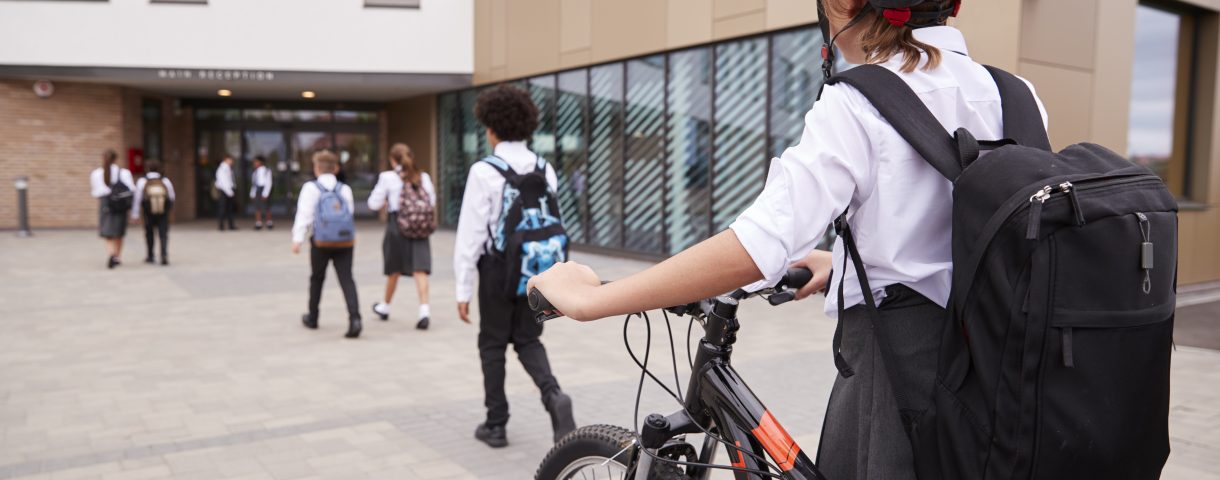Who has responsibility for school transport?
Under the Health and Safety at Work Act 1974, all employers are responsible for ensuring the health and safety of their employees and non-employees, so far as is reasonably practicable. In addition, the Management of Health and Safety Regulations 1999 require employers to carry out risk assessments and put measures in place to control any significant risks.
Accompanying children to and from school by bus
Appropriate training should be undertaken by all drivers and escorts who are involved in accompanying pupils to and from school. There’s also a requirement to ensure records relating to this are kept up to date.
Individuals who are responsible for planning and managing school transport should also undertake appropriate equality training, which should include the need to recognise all types of disabilities (including hidden disabilities) and supporting and managing these pupils. Equality training should also include an awareness of discrimination issues, training on the appropriate ways in which to communicate with such pupils, and training on the implementation of health care protocols to cover emergency procedures.
Responsibility for vehicle movements on and immediately outside the school’s premises
The management of identified risks should be in line with current workplace transport guidance, including segregation, marking and lighting. With regard to incidents that occur on school buses, the Vehicle and Operator Services Agency (VOSA) judges whether they are operating a safe system of work and the Health and Safety Executive (HSE) will become involved in incidents when serious management failures have been identified as contributing factors to a road traffic accident.
Where does responsibility lie for health and safety on a school trip?
An employer has the legal responsibility and accountability for the health and safety of pupils, employees and volunteers involved on an educational visit. The day-to-day management of the visit and responsibility can be delegated to the head teacher who’s then accountable for ensuring established policies are implemented, and all visits and activities are properly planned and supervised by a competent person (or persons).
Through organising and taking part in school visits off-site, these designated individuals act in ‘loco parentis,’ accepting responsibility for the care and welfare of pupils together with duties as employees and/or managers under health and safety at work legislation.
It’s a requirement for employers to be satisfied that their employees, who are designated to take responsibility for visits and activities, are competent to lead or supervise such events. In the case of adventure activities, it’s often the case that specialists with the appropriate skills and qualifications will lead activity elements of a trip, with teachers remaining in charge at all other times.
Who’s responsible in the event of an accident occurring while on a school trip?
Liability in the event of an accident occurring generally lies with the employer. Personal liability occurs where individuals designated with responsibility for leading or supervising the trip ignore clear, direct instructions about serious risks and depart from all common sense. Leaders or supervisors who have acted responsibly are unlikely to be held accountable for accidents.
What are the procedures for reporting an injury on a school trip?
In the event of an accident occurring, the employer should have a procedure in place that staff must follow. It’s also a requirement that the Reporting of Injuries, Diseases and Dangerous Occurrences Regulations is followed.
Where injuries occur on visits to farms, staff should read HSE’s guidance on preventing or controlling ill health from animal contact at visitor attractions. This guidance provides advice on how to minimise the risk of catching disease from animals.
Adult to pupil ratios on school trips
There are no specific ratios of adults to pupils defined in legislation. Appropriate ratios should be defined through an educational establishment’s risk assessment, taking into account the activity being undertaken and the age and maturity of pupils. This will also include an assessment of the specific needs of a group, including the need to make any reasonable adjustments to enable pupils with learning or physical difficulties to fully participate in the education provided.
Volunteers who take part should be used to supplement the supervising ratio. On no account should volunteers be left in charge of pupils if they haven’t been subject to DBS clearance.
Poor behaviour on school buses / public transport
Positive behaviour on buses at all times is promoted by the DfE through the Education and Inspections Act 2006, which provides head teachers with the power to act in response to inappropriate pupil behaviour, including using powers of exclusion when appropriate.
This power extends to situations that occur outside of school premises in cases where it’s reasonable for the head teacher to act and despite the fact that such pupils aren’t under the legal control of the school when a particular incident occurs. The question of whether pupils are wearing school uniform doesn’t affect the right of head teachers to apply this power.
DfE guidance
The full non-statutory advice for schools on driving school minibuses can be found here
About NAHT
NAHT is the leading union for school leaders’ and as a member you get access to legal support and advice, discounts and deals on your daily purchases, access to a mentoring scheme and savings on our highly-rated CPD courses and conferences. To join us, visit out membership page.

